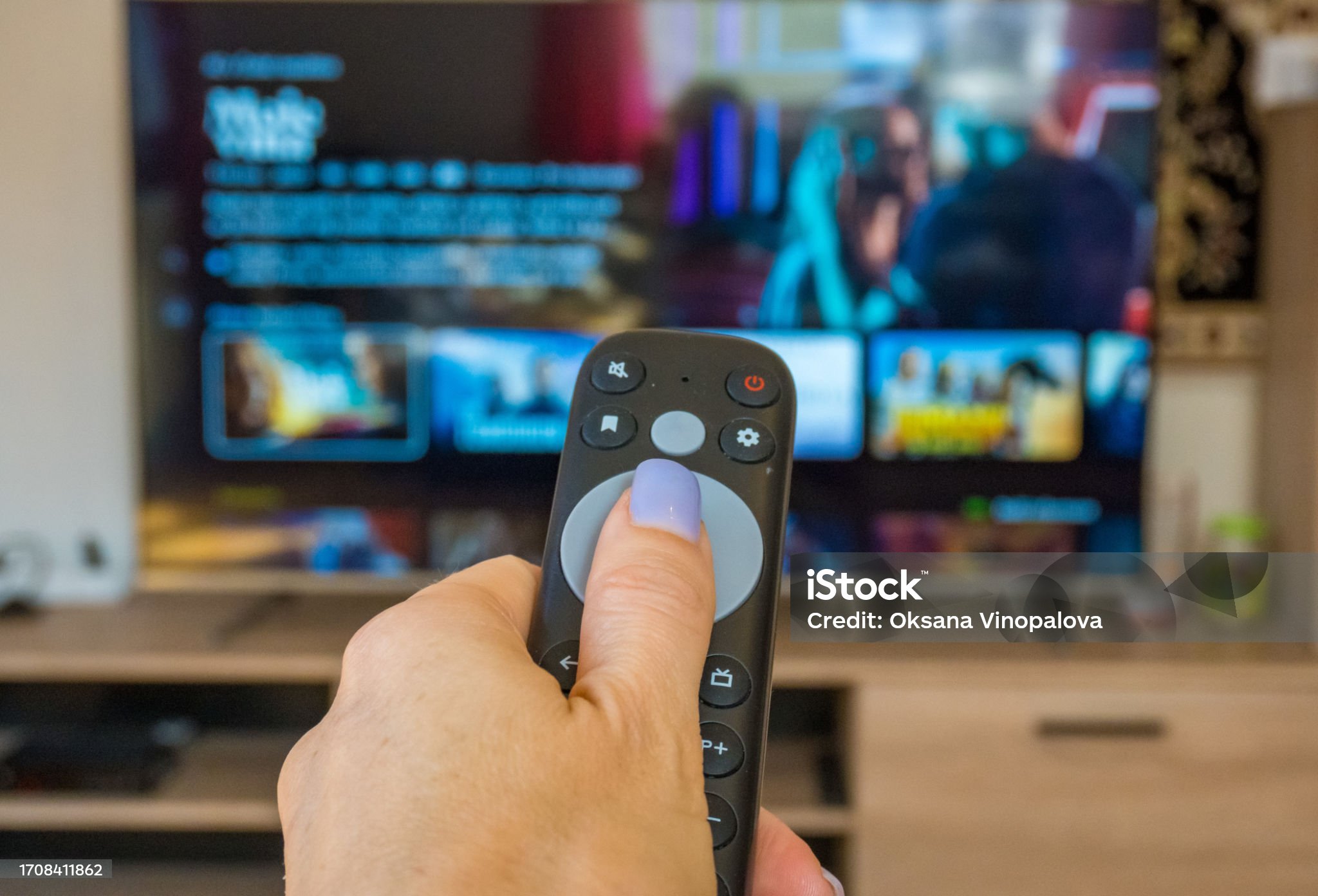The Future of IPTV in the UK and America: Key Advancements
The Future of IPTV in the UK and America: Key Advancements
Blog Article
1.Overview of IPTV

IPTV, or Internet Protocol Television, is growing in significance within the media industry. In stark contrast to traditional TV broadcasting methods that use expensive and primarily proprietary broadcasting technologies, IPTV is delivered over broadband networks by using the same Internet Protocol (IP) that serves millions of personal computers on the modern Internet. The concept that the same shift towards on-demand services is anticipated for the era of multiscreen TV consumption has already piqued the curiosity of various interested parties in the technology convergence and future potential.
Viewers have now embraced watching TV programs and other video content in a variety of locations and on a variety of devices such as smartphones, desktops, laptops, PDAs, and additional tools, in addition to traditional TV sets. IPTV is still in its early stages as a service. It is growing, however, by leaps and bounds, and numerous strategies are emerging that are likely to sustain its progress.
Some argue that low-budget production will probably be the first content production category to dominate compact displays and play the long tail game. Operating on the business side of the TV broadcasting pipeline, the current state of IPTV hosting or service, nevertheless, has several clear advantages over its cable and satellite competitors. They include HDTV, on-demand viewing, custom recording capabilities, communication features, web content, and responsive customer care via supplementary connection methods such as mobile phones, PDAs, global communication devices, etc.
For IPTV hosting to operate effectively, however, the internet gateway, the core switch, and the IPTV server consisting of media encoders and server hardware configurations have to work in unison. Numerous regional and national hosting facilities must be entirely fail-safe or else the signal quality deteriorates, shows could disappear and are not saved, communication halts, the visual display vanishes, the sound becomes interrupted, and the shows and services will not work well.
This text will examine the competitive environment for IPTV services in the United Kingdom and the US. Through such a comparative analysis, a number of important policy insights across various critical topics can be explored.
2.Legal and Policy Structures in the UK and US Media Sectors

According to the legal theory and associated scholarly discussions, the selection of regulatory approaches and the policy specifics depend on perspectives on the marketplace. The regulation of media involves rules on market competition, media proprietary structures, consumer rights, and the safeguarding of at-risk populations.
Therefore, if we want to regulate the markets, we must comprehend what characterizes media sectors. Whether it is about proprietorship caps, market competition assessments, consumer protection, or children’s related media, the governing body has to possess insight into these areas; which media markets are seeing significant growth, where we have competition, vertical consolidation, and ownership overlaps, and which sectors are slow to compete and suitable for fresh tactics of key participants.
In other copyright, the current media market environment has consistently evolved to become more fluid, and only if we consider policy frameworks can we identify future trends.
The expansion of Internet Protocol Television everywhere accustoms us to its adoption. By combining traditional television offerings with novel additions such as technology-driven interactive options, IPTV has the potential to be a crucial factor in enhancing rural appeal. If so, will this be adequate to reshape regulatory approaches?
We have no evidence that IPTV has extra attractiveness to individuals outside traditional TV ecosystems. However, certain ongoing trends have had the effect of putting a brake on IPTV growth – and it is these developments that have led to tempering predictions on IPTV growth.
Meanwhile, the UK embraced a liberal regulation and a engaged dialogue with market players.
3.Market Leaders and Distribution

In the UK, BT is the key player in the UK IPTV market with a 1.18% market share, and YouView has a 2.8% share, which is the landscape tv uk shows of basic and dual-play service models. BT is usually the leader in the UK according to market data, although it experiences minor shifts over time across the 7 to 9 percent bracket.
In the United Kingdom, Virgin Media was the first to start IPTV using hybrid fiber-coaxial technology, followed by BT. Netflix and Amazon Prime are the dominant streaming providers in the UK IPTV market. Amazon has its own set-top device-centered platform called Amazon Fire TV, comparable to Roku, and has just launched in the UK. However, Netflix and Amazon are not available in any telecommunications provider networks.
In the American market, AT&T is the top provider with a market share of 17.31%, surpassing Verizon’s FiOS at 16.88 percent. However, considering only DSL-delivered IPTV, the leader is CenturyLink, followed by AT&T and Frontier, and Lumen.
Cable TV has the majority hold of the American market, with AT&T drawing 16.5 million IPTV customers, primarily through its U-verse service and DirecTV service, which also is active in the Latin American market. The US market is, therefore, split between the main traditional telephone companies offering IPTV services and new internet companies.
In these regions, key providers use a converged service offering or a loyal customer strategy for the majority of their marketing, offering three and four-service bundles. In the United States, AT&T, Verizon, and Lumen largely use infrastructure owned by them or legacy telecom systems to offer IPTV services, though to a lesser extent.
4.IPTV Content and Plans

There are differences in the content offerings in the UK and US IPTV markets. The range of available programming includes real-time national or local shows, programming available on demand, pre-recorded shows, and unique content like TV shows or movies accessible solely via the provider that aren’t sold as videos or broadcasted beyond the service.
The UK services feature classic channel lineups comparable with the UK cable platforms. They also provide moderately sized plans that cover essential pay-TV options. Content is organized not just by preferences, but by distribution method: terrestrial, satellite, Freeview, and BT Vision VOD.
The main differentiators for the IPTV market are the subscription models in the form of preset bundles versus the more adaptable à la carte model. UK IPTV subscribers can select add-on subscription packages as their viewing tastes change, while these channels come pre-bundled in the US, in line with a user’s initial preset contract.
Content partnerships reflect the varied regulatory frameworks for media markets in the US and UK. The trend of reduced exclusivity periods and the shifts in the sector has notable effects, the most direct being the business standing of the UK’s dominant service provider.
Although a recent newcomer to the crowded and competitive UK TV sector, Setanta is poised to capture a broad audience through appearing cutting-edge and securing top-tier international rights. The strength of the brands plays an essential role, alongside a product that has a cost-effective pricing and offers die-hard UK football supporters with an attractive additional product.
5.Future of IPTV and Tech Evolution

5G networks, combined with millions of IoT devices, have transformed IPTV transformation with the introduction of AI and machine learning. Cloud computing is greatly enhancing AI systems to enable advanced features. Proprietary AI recommendation systems are increasingly being implemented by streaming services to enhance user engagement with their own advantages. The video industry has been transformed with a new technological edge.
A enhanced bitrate, via better resolution or improved frame rates, has been a key goal in improving user experience and attracting subscribers. The breakthrough in recent years stemmed from new standards established by industry stakeholders.
Several proprietary software stacks with a reduced complexity are nearing release. Rather than focusing on feature additions, such software stacks would allow streaming platforms to optimize performance to further enhance user experience. This paradigm, reminiscent of prior strategies, hinged on customer perception and their need for cost-effectiveness.
In the near future, as rapid tech uptake creates a uniform market landscape in user experience and industry growth stabilizes, we foresee a service-lean technology market scenario to keep senior demographics interested.
We emphasize a couple of critical aspects below for the UK and US IPTV markets.
1. All the major stakeholders may contribute to the next phase in viewer interaction by making static content dynamic and engaging.
2. We see VR and AR as the primary forces behind the growth trajectories for these domains.
The constantly changing audience mindset puts data at the forefront for every stakeholder. Legal boundaries would limit straightforward access to consumers' personal data; hence, user data safeguards would hesitate to embrace new technologies that may leave their users vulnerable to exploitation. However, the present streaming landscape makes one think otherwise.
The digital security benchmark is presently at an all-time low. Technological leaps and bounds have made security intrusions more remote than physical intervention, thereby benefiting cybercriminals at a greater extent than black-collar culprits.
With the advent of headend services, demand for IPTV has been increasing rapidly. Depending on customer preferences, these developments in technology are going to change the face of IPTV.
References:Bae, H. W. and Kim, D. H. "A Study of Factors affecting subscription to IPTV Service." JBE (2023). kibme.org
Baea, H. W. and Kima, D. H. "A Study about Moderating Effect of Age on The IPTV Service Subscription Intention." JBE (2024). kibme.org
Cho, T., Cho, T., and Zhang, H. "The Relationship between the Service Quality of IPTV Home Training and Consumers' Exercise Satisfaction and Continuous Use during the COVID-19 Pandemic." Businesses (2023). mdpi.com
Report this page